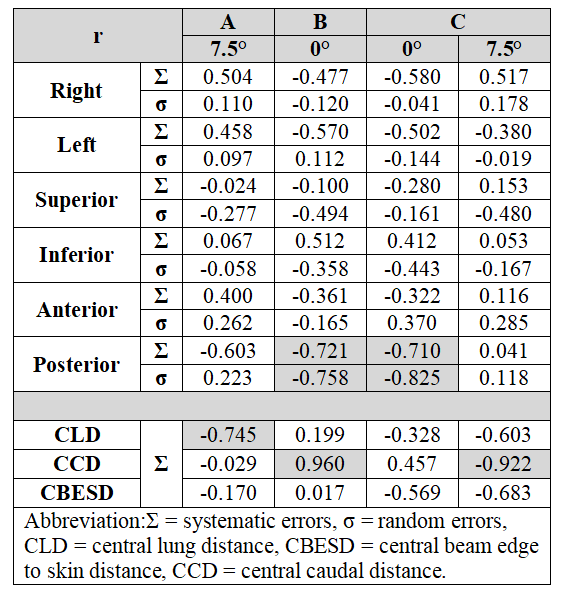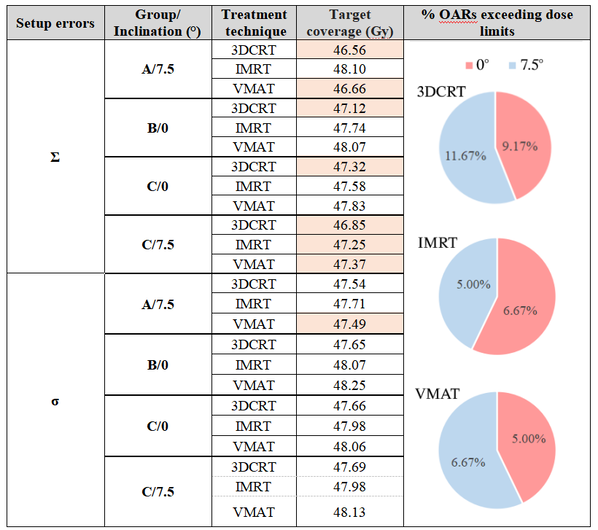The impact of breast board and body mass index on setup errors during breast cancer radiotherapy
Ioana - Claudia Costin ,
Romania
PO-2059
Abstract
The impact of breast board and body mass index on setup errors during breast cancer radiotherapy
Authors: Ioana - Claudia Costin1, Ioana-Claudia Costin2, Loredana G. Marcu3,4,5
1West University of Timisoara, Faculty of Physics, Timisoara , Romania; 2"Dr. Gavril Curteanu" County Hospital, Radiotherapy, Oradea, Romania; 3West University of Timisoara, Faculty of Physics, Timisoara, Romania; 4University of Oradea, Faculty of Informatics & Science, Oradea, Romania; 5University of South Australia, Cancer Research Institute, Adelaide, Australia
Show Affiliations
Hide Affiliations
Purpose or Objective
Stability and reproducibility in radiotherapy are mandatory for tumor control, for healthy tissue protection and for an effective treatment. In view of this, the evaluation of the factors contributing to setup errors and the calculation of setup margins for the planning target volume should be stringent clinical requirements. This work presents the effect of breast board inclination and body mass index (BMI) on patient setup and dosimetry during conformal as well as intensity modulated radiotherapy techniques.
Material and Methods
The immobilization system used for patient setup was a Quest breast board which allowed different inclination of the patient, hand and arm holders and a bottom stopper. Three groups of patients positioned in supine were evaluated: group A immobilized on 7.5° inclination, group B immobilized on 0° inclination (no inclination) and group C which was immobilized on both inclinations (0° and 7.5°). Patient position was evaluated with weekly orthogonal and tangential portal images to assess the systematic (Σ) and random (σ) errors for standard coordinates (right-left, superior-inferior and anterior-posterior) and also for some tangential image parameters: central lung distance (CLD), central beam edge to skin distance (CBESD) and central caudal distance (CCD). Three sets of treatment plans were completed for all patients (3DCRT, IMRT and VMAT techniques) using conventional dose prescription (50Gy in 25 fractions) and error simulations were performed on Monaco 5.51.10 treatment planning system. The relationship between BMI and setup errors was assessed using the Pearson correlation coefficient.
Results
Correlations between BMI and errors show a statistical relevance on posterior direction for 0° inclination (table 1) and for tangent parameters the correlation was observed at CLD for 7.5° and CCD for both inclinations. Regarding target volume dosimetry under systematic and random errors, the study showed that systematic errors are more pronounced than random errors (table 2). For group C positioned on 7.5° board, the mean target coverage for 3DCRT (46.85Gy), IMRT (47.25Gy) and VMAT (47.37Gy) under systematic errors did not reach 95% of the prescribed dose. The organs at risk (OARs) were better protected with modulated techniques, with the percentage of OARs exceeding the recommended dose limits being smaller for modulated plans than for conformal treatment (table 2).
Table 1. Statistical correlation between BMI and setup errors

Table 2. Target and OARs

Conclusion
Evaluating the factors that impact on target coverage and dose constrains for organs at risk can improve the outcome of radiotherapy. Furthermore, providing correlations between variables such as BMI and positioning errors, an optimal decision on the choice of board immobilization and inclination can be made, leading to a more personalized treatment.